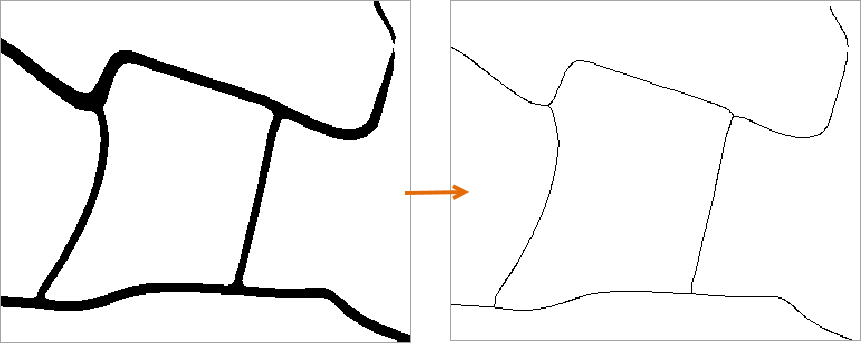Function Description
The Binary Thin Raster is a thinning method for processing a binary image. If the data is not a binary image, it will be processed as a binary image first. Only one value needs to be specified as a null value, and all values except the null value are values that need to be thinned. The Binary Thin Raster feature supports both Raster Data and Image Data.
Raster Thinning is suitable for road data, or the user source data is binary Grid/Image data, and the efficiency is faster and more efficient through the function of Binary Thin Raster than ordinary Raster Thinning.
Function entrance
- Click Spatial Analysis tab-& gt Raster Analysis group-& gt Vector-Raster Conversion-& gt Binary Thin Raster.
- Toolbox-& > Raster Analysis-& > Vector-Raster Conversion-& > Binary Thin Raster. (iDesktopX)
Parameter Description
Set parameters such as source data, no value, tolerance, and Result Datain the Binary Thin Raster "dialog box. For detailed parameter descriptions, see Raster Thinning .
Save as raster dataset: when the source data is Image Dataset, check this box to generate Result Dataset as Raster Dataset.
Application example
Theexisting road data in a certain area need to be processed with binary thinning function, which can reduce the number of pixels used to identify the road in Raster Data, thereby improving the speed and accuracy of vectorization. After setting the Binary Thin Raster Parameters, the result is as shown in the following figure.
of Binary Thin Raster result |
| Figure: Comparison |
 Precautions
Precautions
- The tolerance for
- no value is the user-specified tolerance for the value of no value, regardless of the original no value in the grid.
- It is recommended that the user click the Pick button to set the value of the opened Raster Dataset to "No Value". If the value of No Value entered by the user is a value that does not exist in the Dataset pixel value, the Calculate Result will be incorrect, or the Raster Thinning cannot be performed.



